
Pediatric Standers, Standing Frames and Stand Systems are utilized for children with developmental delays, disabilities and other physical challenges. Children, such as those with Cerebral Palsy, who are confined to wheelchairs or have compromised ambulation skills benefit significantly from standing devices. Standing technologies generally enable individuals by facilitating their ability to stand upright at various intervals throughout the day. Standing frames are used to improve circulation and studies have shown that the joint weight bearing achieved through standing improves bone density. Our standing systems are offered in a wide variety of designs, sizes and configurations to satisfy individual patient measurements and requirements.
Need help deciding? The 5 Best Pediatric Standers and How to Choose the Best Pediatric Stander
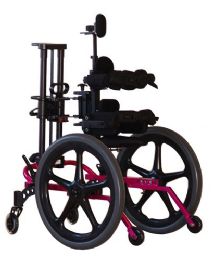



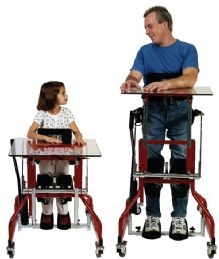
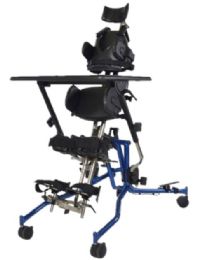




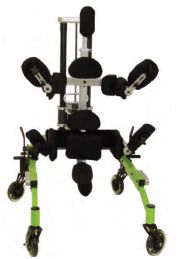




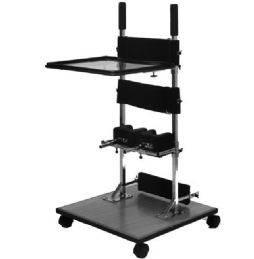
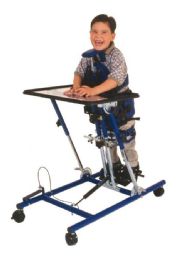
.jpg&newheight=260&quality=80)
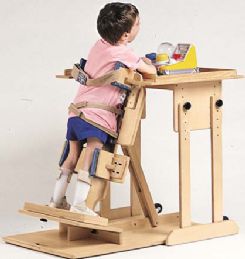



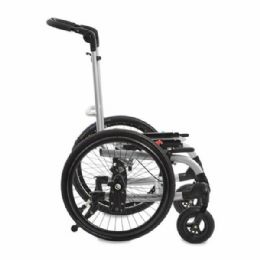


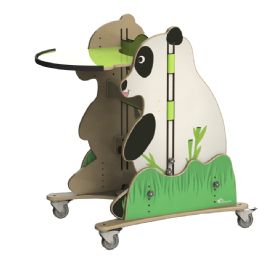
What is a Pediatric Stander?
Also known as a standing frame, standing aid or standing system, a pediatric stander assists children who are unable to stand on their own to participate in this vitally important activity. Because standing is crucial to proper physical and mental function, these innovative standing aids can be of great benefit to children with disabilities, developmental delays and other mobility challenges.
While there are a number of different design types, pediatric standers are offered in three basic formats; passive, active and mobile. Passive standers are constructed to stay in one place. Although they may include caster wheels so that caregivers can move the child in the stander, passive standers do not offer self-propulsion to the young user. Active standers are constructed to allow reciprocal movement of the arms and legs while remaining in a standing position. Mobile standers may include powered mobility to help children to move the stander as they walk and move, or this type may be self-propelled as long as the young user has enough strength, typically what it would take to push a manual wheelchair.
Pediatric standing devices offer a vast array of varying features, but the following are the most basic design types available today:
Upright/Vertical Pediatric Standers
If a young user is unable to stand independently because of inadequate balance skills, an upright/vertical stander will support the lower body to result in vertical alignment in a standing position. This type of standing aid is more appropriate for young users with moderate control of the trunk area.
Supine Pediatric Standers
Most often recommended for children who need assistance with head and/or trunk control against the pull of gravity during therapy and other activities, supine pediatric standing devices place the support on the young user’s back for full-length standing support. The child bears weight through the feet in the standing position with the use of this particular stander.
Prone Pediatric Standers
Requiring some attendant trunk strength and fairly good head strength, a prone stander is best applied for young users that have a pretty symmetrical spine, along with full hip extension abilities. Prone standers are angled in a gravity-dependent position, with the supports against the abdomen. The child typically bears weight through the legs, but also sometimes through the arms.
Multi-Positioning Pediatric Standers
Perfect for children who do not have very good balance, postural control or weight shifting abilities to walk or stand without help, the multi-positioning pediatric stander provides 360-degrees of movement within its support base. The young user remains securely and properly aligned in a standing position as they move around within this standing system.
Sit-to-Stand Pediatric Standers
Young users can easily transfer from a supported seated position to a supported standing position all within the comfortable confines of a sit-to-stand stander device. This greatly benefits the child by eliminating the need for other lifting or transfer devices, and makes frequent therapeutic standing a much simpler activity to engage in.
Pediatric Standing Wheelchairs
Also referred to as a standing chair, a standing wheelchair enables the young user to raise the chair seat from a seated position to a standing position, and back again. This standing device offers full standing support, allowing wheelchair-bound children to interact more at standing eye-level.
Where are Pediatric Standers Used?
Standing aids to help children who are disabled or physically challenged are utilized in a number of different settings. Aside from in their own home, standers are often used in early intervention centers, children’s hospitals, children’s therapy centers, schools, special education classrooms, adapted physical education gyms, children’s care facilities, and rehabilitation facilities. They can be used wherever the child would like to roam and interact at eye-level with peers or adults, such as playgrounds, parks, shopping malls, restaurants, recreational centers, amusement parks and gaming rooms.
Why is Standing so Important?
Passive and active standing positively impacts us all with physical, emotional and social health benefits. The act of standing provides flexibility and mobility options for the growing child which will ultimately lead to improved physical and psychological well-being as the child becomes an adult. Here are just a few of the many healthy benefits that pediatric standers can help your child to realize:
Improves circulation and blood pressure, while reducing edema (swelling) in lower extremities.
Enhances respiration function and control of the voice.
Improves digestion, intestinal function and urinary/bladder drainage and flow.
Enhances energy, alertness, clarity, well-being and sleep patterns.
Improves skin integrity, relieving pressure that can cause bedsores/pressure ulcers.
Enhances bone density, reducing the risk of fractures (weight bearing has a positive impact on normal bone development).
Improves the formation of the hip joint, as children who stand by the age of 12-16 months are more disposed to development of the ball and socket of the hip joint, preventing hip dislocation.
Enhances the normal stretch of muscles, aiding in the prevention of contractures. Hamstring extension increases range of movement (ROM) and helps to alleviate spasticity.
Pediatric standers, standing frames and standing systems help children to become more independent, enabling them to interact at eye-level with their peers. This not only boosts their physical development, but also improves confidence, self-image and self-esteem. This sense of self-empowerment will help the child in every aspect of their life, from learning in school to getting along well with others.
Rehabmart offers safe and secure standing support for children of all ages and sizes. The act of standing provides wonderful physical and psychological health benefits for young users who are unable to stand on their own. Rehabmart is proud to present a comprehensive assortment of superior quality pediatric standers, standing frames and standing systems from innovative and renowned manufacturers including Snug Seat, Easy Walking Incorporated, Altimate Medical, Otto Bock Health, Rifton, Prime Engineering, TherAdapt, Bailey Manufacturing, Innovation in Motion, Sammons Preston and Kaye Products.
Hulet Smith, OT
Rehabmart Co-Founder & CEO
ck